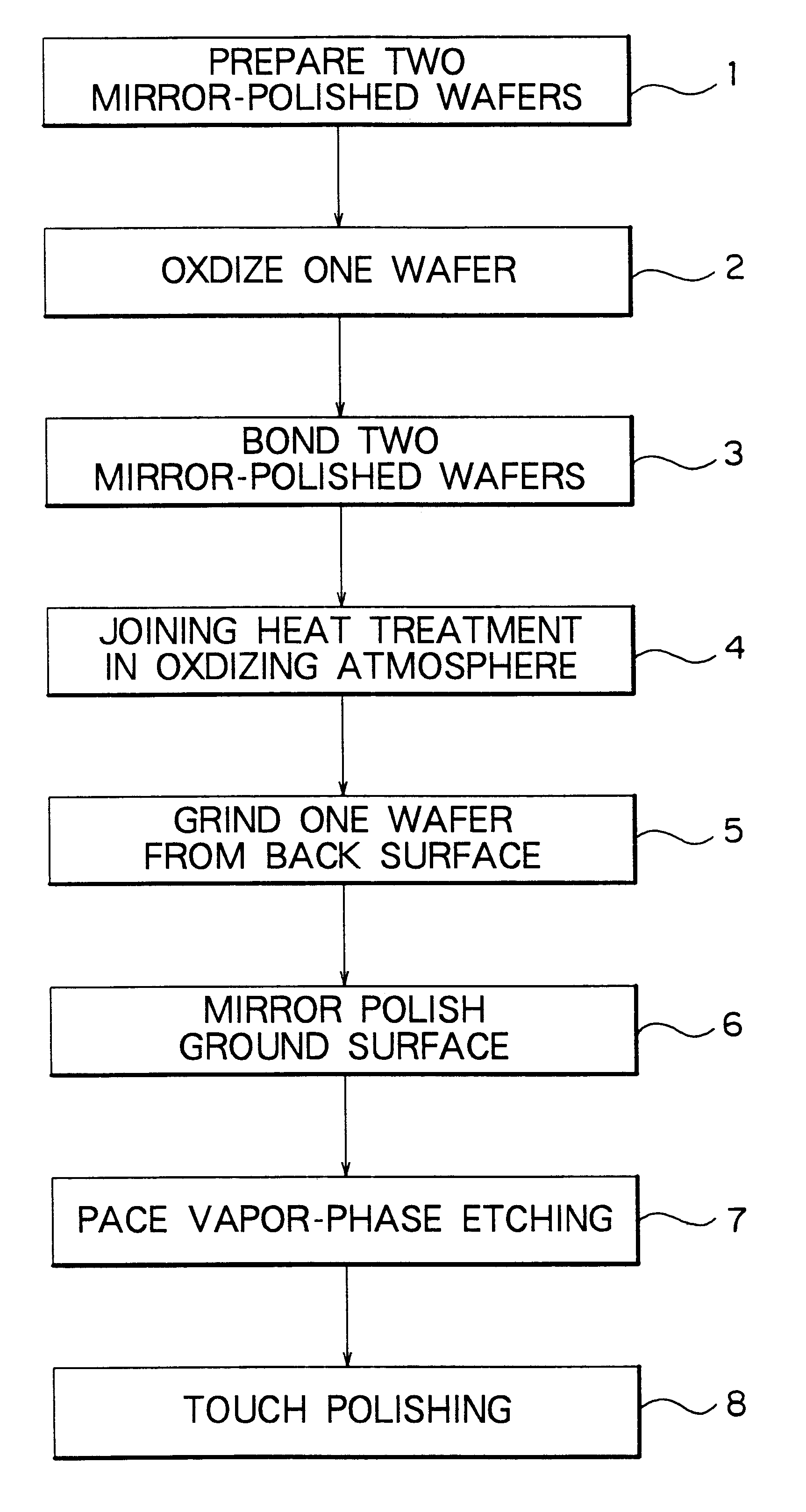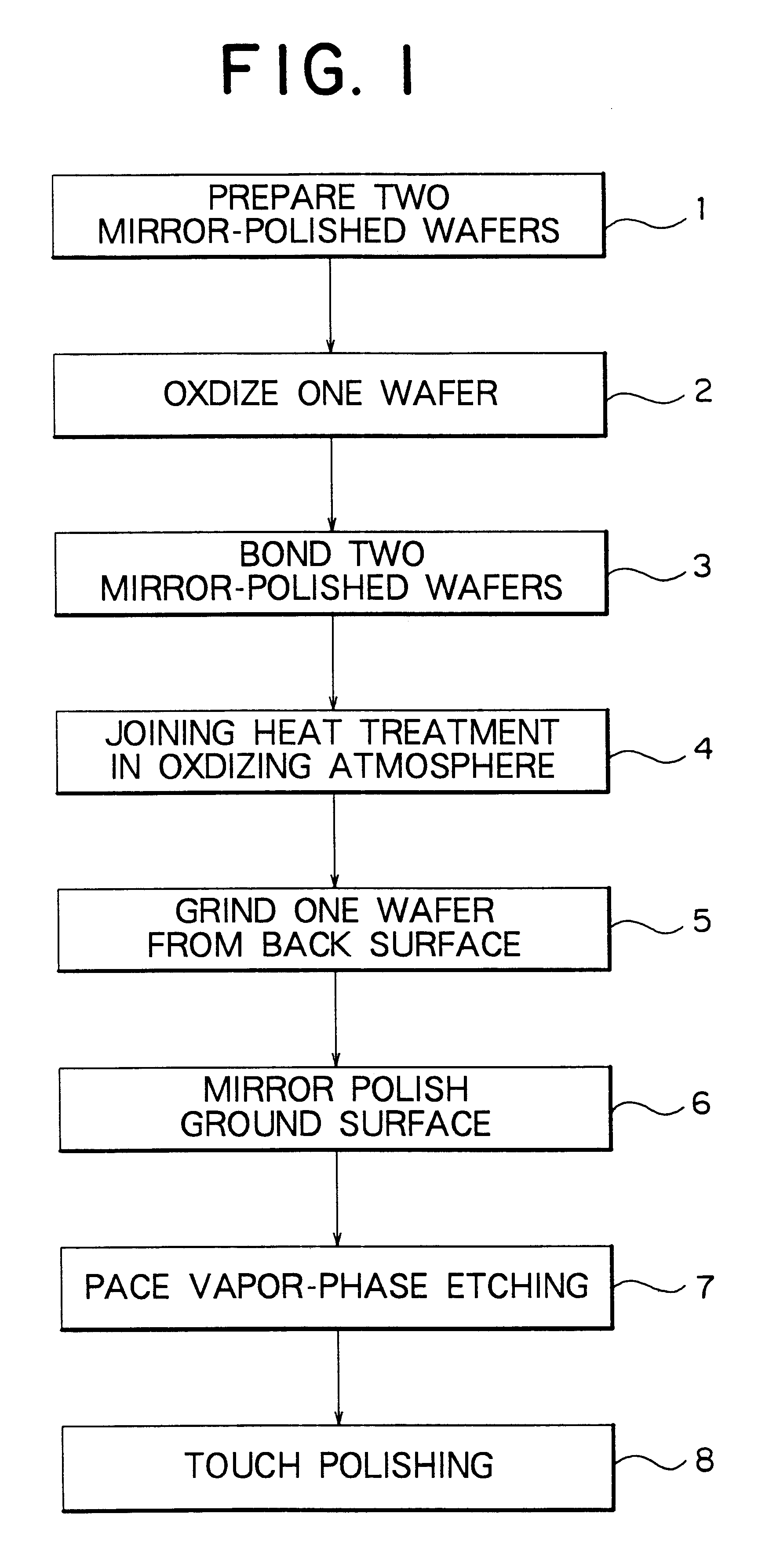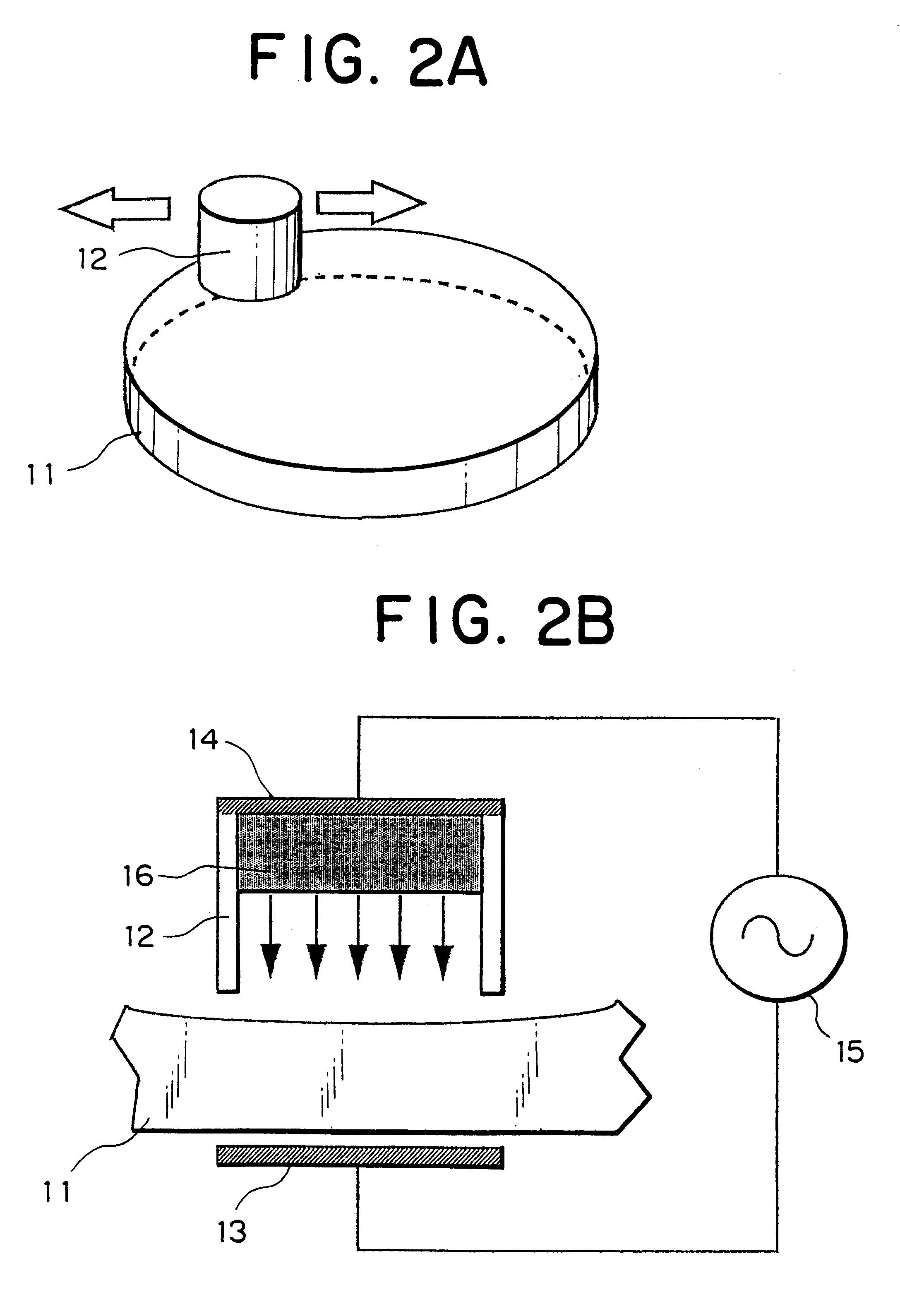Method of forming oxide film on an SOI layer and method of fabricating a bonded wafer
a technology of oxide film and soi layer, which is applied in the direction of basic electric elements, electrical apparatus, semiconductor devices, etc., can solve the problems of manysimox methods, limited thickness and thickness uniformity of the resultant soi layer, and slight damage to the surface of the soi layer, etc., to achieve excellent crystallinity, prevent crystal defects, and high degree of thickness uniformity
- Summary
- Abstract
- Description
- Claims
- Application Information
AI Technical Summary
Benefits of technology
Problems solved by technology
Method used
Image
Examples
Embodiment Construction
Next, the present invention will be described by way of example. However, the present invention is not limited thereto.
Twenty-four mirror-polished silicon wafers having a diameter of 150 mm (conductive type: p type; resistivity: 10 .OMEGA..multidot.cm) were prepared and divided into 12 bond wafers and 12 base wafers. These wafers were joined in accordance with the processes shown in FIG. 1 in order to yield 12 bonded wafers whose SOI layer had a thickness of 0.8 .mu.m. The 12 bonded wafers were subjected to thermal oxidation two pieces at a time such that the thickness of the oxide film became 6 nm, 24 nm, 50 nm, 110 nm, 275 nm, or 685 nm (six kinds). For the oxide film thicknesses of 6 nm, 24 nm, and 50 nm, an oxidation atmosphere containing 95% nitrogen and 5% oxygen was used. For the oxide film thicknesses of 110 nm, 275 nm, and 685 nm, a wet oxygen atmosphere was used. Subsequently, the oxide film was removed through use of aqueous solution of hydrofluoric acid, and then prefere...
PUM
 Login to View More
Login to View More Abstract
Description
Claims
Application Information
 Login to View More
Login to View More - R&D
- Intellectual Property
- Life Sciences
- Materials
- Tech Scout
- Unparalleled Data Quality
- Higher Quality Content
- 60% Fewer Hallucinations
Browse by: Latest US Patents, China's latest patents, Technical Efficacy Thesaurus, Application Domain, Technology Topic, Popular Technical Reports.
© 2025 PatSnap. All rights reserved.Legal|Privacy policy|Modern Slavery Act Transparency Statement|Sitemap|About US| Contact US: help@patsnap.com



